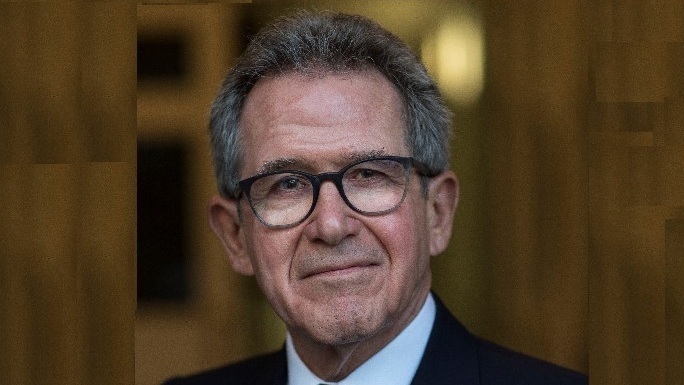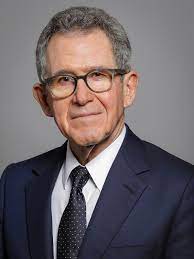
The net zero weight on asset owners’ shoulders: How should investors facilitate the energy transition?
Net zero heavyweights gathered in the British capital to discuss energy transition investments and the role of asset owners in climate finance
While the sector has witnessed exponential growth in the past few years, 2022 saw some notable defections alongside a general sense of fatigue surrounding EG investing, green finance and net zero efforts.
Recently, Vanguard – the world’s second-largest asset manager with $8.1 trillion in assets under management – pulled out of the Net Zero Asset Managers Initiative, part of the United Nations’ Glasgow Financial Alliance for Net Zero that was founded with the aim of steering the global economy towards net-zero emissions.
Meanwhile, in the United States, the House of Representatives voted to prevent pension funds from incorporating ESG criteria into their investment decisions, requiring them to return to their fiduciary duty of maximising returns to their clients.
So are we past the days of peak ESG investing? Despite the green setbacks, what more should asset owners do to facilitate the transition to cleaner energy and reduce greenhouse gas emissions?
The weighty and highly charged topic of energy transition, and particularly the role of asset owners in climate finance, was the focus of a panel at the INSEAD Alumni Forum Europe, which was recently held in London.
The group of speakers included Lord John Browne, former BP chair and these days chairman and co-founder of BeyondNetZero, a $3.5 billion fund that invests in energy transition and climate-related technology.
The panel, which was chaired by INSEAD professor Lily Fang, also included Allison Bennington, a partner at investment fund PJT Partners and global head of its environmental, social and governance (ESG) practice.
Also present was Huw van Steenis, a vice-chair and partner at consulting firm Oliver Wyman, currently sitting on the Climate Advisory Board of the Norwegian sovereign wealth fund.
Climate finance still has much room for growth, the panellists agreed. “I think we are nowhere close to the investment peak,” Lord Browne declared.
“[Globally], we spend about $3 trillion in this area a year, and I think to [keep warming below] 1.5 degrees [Celsius], we have to take that up to at least $4 trillion a year immediately. There’s a lot more to do here… and we need to make sure we expand all the possibilities of investment.”
We are nowhere close to the peak... we need to make sure we expand all the possibilities of investment.

Bennington noted that although there may be a retreat from net zero funds by public capital, private capital is going “full steam ahead” on climate finance.
This is not just in the form of private equity and venture capital, but also multi-billion-dollar capital expenditure by firms – including oil and gas companies such as Browne's former employer BP and others.
A fundamental reason why public funds are retreating from the climate finance arena is that there is a duration mismatch. Energy and infrastructure investments have pay-off periods measured in decades, but liquid fund managers need to and should generate returns for their investors quarterly and annually.
To Van Steenis, the “ESG” label is not a helpful guide for those wanting to invest in climate finance.
"If we are truly talking about climate investing," he added, "the better capital providers in the space are long-term-oriented investors such as private capital, public-private partnerships and large corporations, rather than so-called ESG funds."
Part of the solution
Looking beyond climate investing, what must companies do to support the energy transition? In recent years, many of them have tried to boost their ESG credentials by hiring chief sustainability officers and establishing a sustainability practice.
However, this alone will not suffice if the ultimate goal is to reduce emissions, especially if organisations treat it as a box-ticking exercise. To achieve real results, the entire company needs to be involved.
The binary labelling of organisations as either “green” - generally those in low carbon-emitting industries - or “brown” - generally those in high carbon-emitting industries - is also problematic.
Also read
Proxy season in full swing: Investors press for net zero action but with limited results
“Brown” companies – such as oil and gas players – have drawn the ire of regulators and society. But the reality is they are often capable of multi-billion-dollar, annual capital expenditure and are investing in innovative technologies to reduce emissions.
They also have deep insights into how things can be done differently. For example, some of the best carbon-capture technologies are available right on the oil extraction platforms.
“Companies that are part of the problem are actually part of the solution. Often, these companies are the best placed to create the solutions and put them into effect faster,” Bennington said, adding that governments must also play a role by providing capital to these industries.
“There are a lot of shareholders or investors that see a brown asset and [decide] they can’t be involved, when some of these companies are the very best places to invest going forward.”
Companies that are part of the problem are actually part of the solution.

Lord Browne and van Steenis echoed these views. “We need to get to a situation where we’re thinking not just about reducing financed emissions, but financing emissions reduction,” van Steenis stressed.
Lord Browne said change ultimately needs to take place within the companies themselves. “It’s very important for companies to have an espoused purpose with quantitative measures that get them from A to B,” he said.
“They need to report against it, and there can’t be any floppiness or [picking and choosing which] measures to follow. There has been a lot of this [selective] activity, and as a result, I think that’s why credibility is going down.”
He also highlighted the importance of investors keeping their eyes on the prize: doing everything possible to reduce greenhouse gas emissions.
“[Our purpose is] not to select one thing over another, it’s to do the things that contribute… to get greenhouse gas emissions down to net zero by 2050,” he said.
Opportunities for emerging economies
Following on from this debate, speakers were asked how we can hope to balance reducing emissions with economic growth, as the world’s total demand for energy will continue to increase due to the growing population and rising living standards in Asia and Africa.
Poverty is ultimately a poverty of energy. Affordable and reliable energy sources for lighting, cooking, etc. are essential for access to education and nutrition. Is energy transition and climate finance just a worry for more developed countries?
Or could emerging economies tap into technological advances to chart a greener future for themselves?
“A lot of the developing world has a tremendous opportunity to leapfrog the more developed world in terms of creative approaches to energy and energy use,” stressed Bennington.
We need to get to a situation where we’re thinking not just about reducing financed emissions, but financing emissions reduction.

Bennington gave the example of telecommunications – where the technology has developed free of the burden of legacy systems – as an area in which this has already occurred.
“[Emerging economies can] use amazing technology [including] microgrids and minigrids that are much more difficult to use on a traditional grid that we have in the United Kingdom, Western Europe or the United States.”
Indeed, emerging economies can tap a myriad of technologies to generate green energy, including wind, solar, green hydrogen and nuclear power.
As Lord Browne said, these solutions are affordable and can propel growth. Continued investment is also needed for such innovation to occur.
“International financial institutions do need to channel money [to make this happen],” van Steenis emphasised.
Finally, panellists were asked to share some final thoughts with the current and future business leaders in the room.
Lord Browne perhaps summarised it best. “[The first thing is to] have a purpose… and stick to it. Part of that has to be getting greenhouse gas emissions down,” he said.
“The second thing leaders do is they practise very high-end inclusion – they include everybody in that purpose. And I think that’s been part of our problem. This is not a thing for elites. It’s not a thing for policymakers. It’s not a thing for financiers. It’s a thing for the real economy… [so] work very hard to include every constituent in your movement.”
Also read
CRU boss Rebecca Gordon: ‘The net zero future will see us understand new commodity supply chains’




